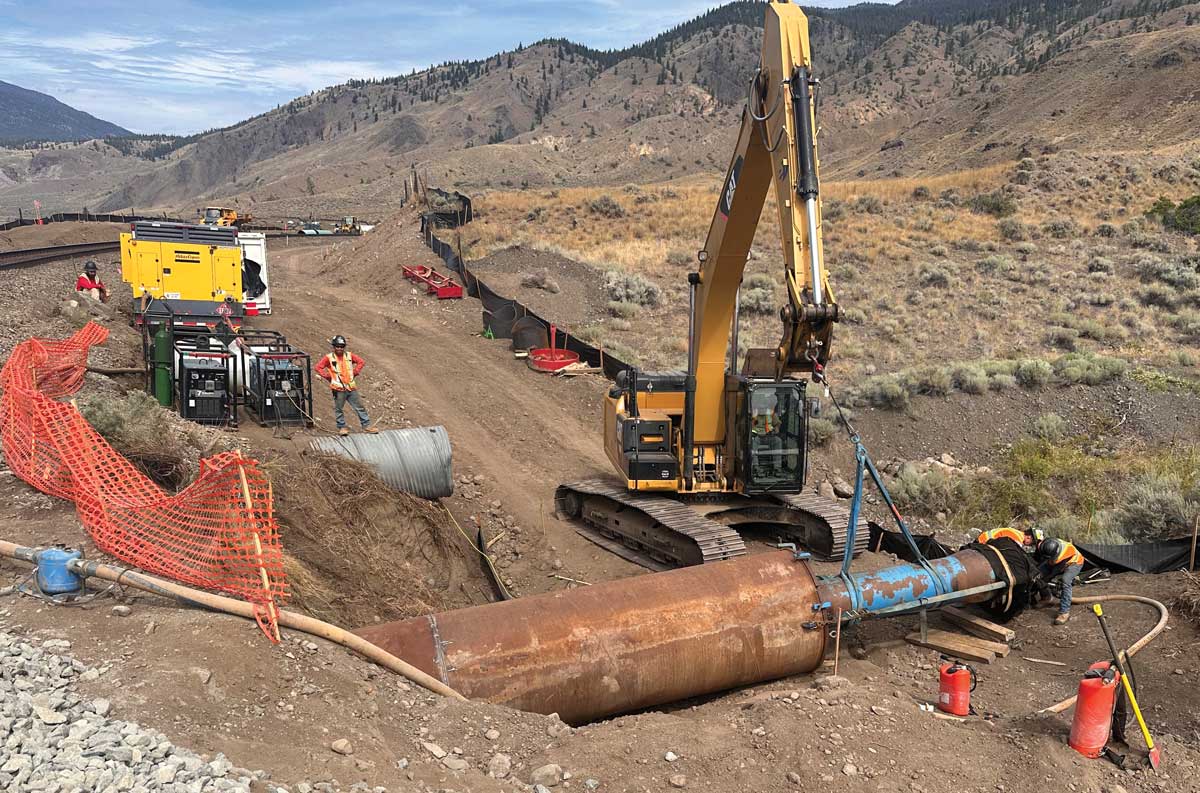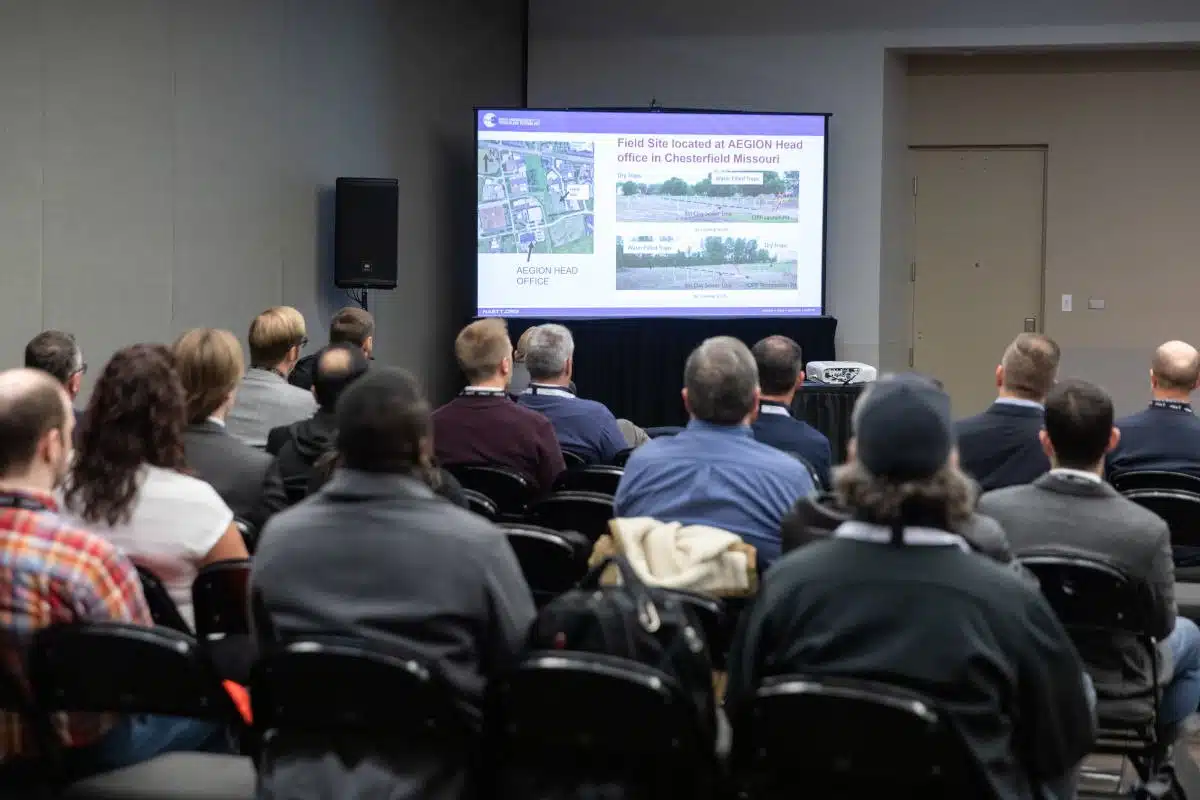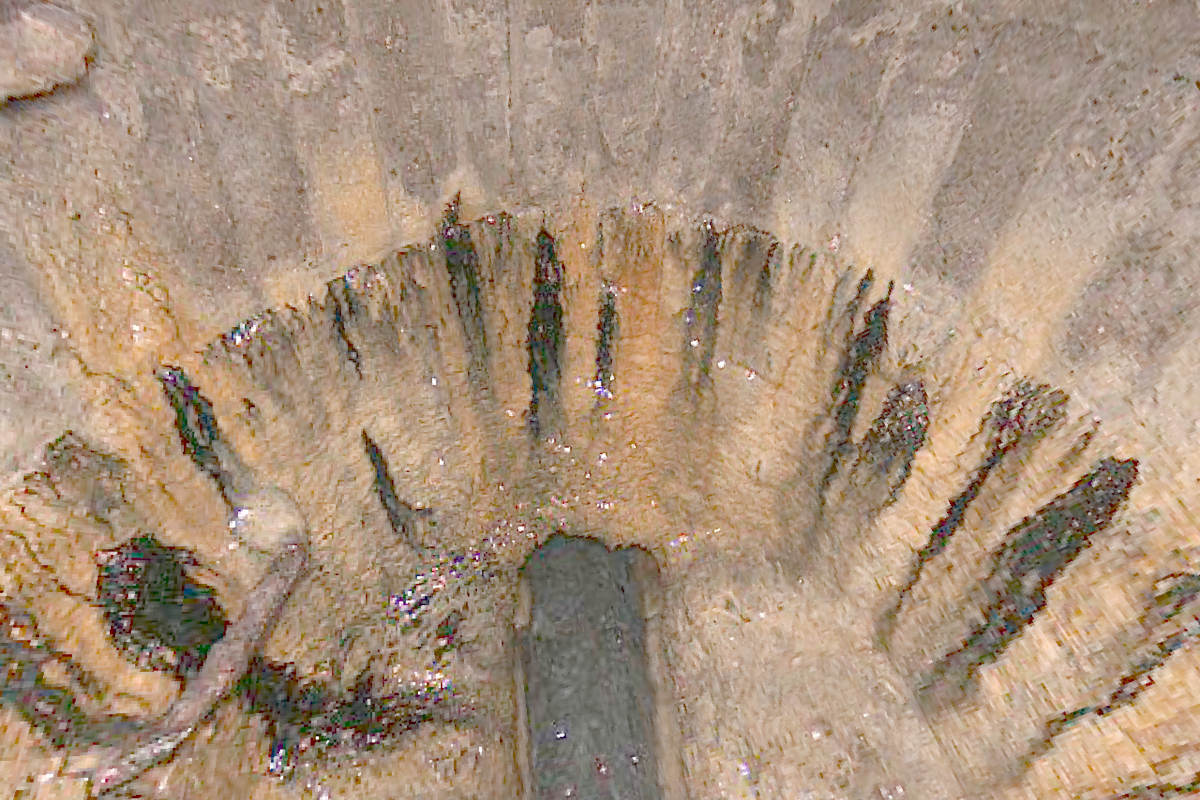
Remote Railway Pipe Ramming in British Columbia
Project Involves the Installation of 12 Drainage Casings Under an Isolated Rail Line
For certain contractors, working in difficult conditions is just another challenge to be overcome to get the job done. For Total Trenchless LTD., based in Calgary, Alberta, a recent railway pipe ramming project in British Columbia provided significant logistical and physical challenges.
Working in remote access locations is difficult by any standard, but the inherent benefits of trenchless technology apply no matter the location or conditions.
According to Total Trenchless safety/field operations supervisor Jeff Corsie the remote nature of the project necessitated creative transportation options. “We all stayed in Kamloops, B.C., and we’d drive about 25 minutes out of Kamloops to a marina. That’s where we’d leave our vehicles,” he said. “Then we’d walk down to the docks, get on a boat every morning and take about a 10-minute boat trip across the lake to the worksite. Then we walked from the shoreline up the hill to the work location. That’s how remote the jobsite was.”
The project consisted of the installation of 12 drainage casings, through pneumatic pipe ramming, under an isolated rail line outside of the Kamloops, British Columbia, area. The busy mainline railway is critical to moving imported and domestic cargo to the landlocked provinces to the east. The containers originate overseas and are handled at the port of Vancouver and loaded onto the railcars. The casings that Total Trenchless was installing ranged in diameter from 36 to 60 in. and with an installation length averaging 100 ft. Total Trenchless utilized two 24-in. diameter Grundoram Taurus pipe rammers from TT Technologies for the project.
The railway companies make rolling trains through a priority, even during a tough remote construction project.
TT Technologies pipe ramming specialist Rick Melvin said the tool was a good choice. “The Taurus is ideal for that range of diameter and length of the rams. It can handle all that and more. So, the Taurus was a good equipment selection for this job,” he explained. “And pipe ramming under railways is often the preferred trenchless method. Pipe ramming allows for the casing installation without surface slump and when you’re talking railroads, that’s critical. The method was right, and the tool was right, but getting everything to the jobsite, that was the fun part.”
Established in 2018 by several experienced trenchless individuals, Total Trenchless is an indigenous-owned company that offers a range of trenchless options including horizontal auger boring, pipe ramming, guided horizontal auger boring, guided pipe ramming, pipe jacking and pipe bursting. The utility contractor operates throughout western Canada and is no stranger to remote access sites. That was just one of many challenges that Total Trenchless crews would face on this project.
Logistics
In order to transport the necessary equipment, casings and ramming gear to the jobsite locations, Total Trenchless used a Hytracker rail car. “It’s an ordinary excavator. The operator crawls up onto the deck of the rail car. The hydraulics from the excavator are plumbed into that unit,” Corsie explained. “The excavator physically drives that car that he’s sitting on, and then he’s able to put a cart on either side of him to carry cargo. This is something that is widely used up here in Canada anyway, for remote work.
“When telling somebody about a remote rail job, people got to understand how in the world you would get your equipment to a place where there’s no roads. Well, materials and equipment combined, I would say that those little tracker units probably made 20 trips to get everything we needed to do the job there.”
It was approximately six miles by rail from location where crews could load the tracker unit to the initial jobsite location. After arriving at the first ram site, crews had to travel even further as ramming locations moved down the rail line.
Corsie said, “Some jobsite locations were closer than others. Some were quite a distance. Somewhere between a quarter of a mile and a third of a mile apart. The total span of the work area was probably about two miles. But we didn’t have any transportation options other than our own two feet. So that last install location was two miles from where we would start our day, where we get off the boat.”
As materials were brought out to the jobsite crews did their best to position the materials where they would be used. However, because of narrow right of ways along the rail line, a stockpile of material was created in one of the wider areas. This added to the logistical difficulty as the project continued moving further down the tracks.
Pipe Ramming Project Scope & Operations
For the project in Kamloops, Total Trenchless was contracted to install 12 casings to replace existing, aging culverts along the railway. Of the 12 installations one was 36 in. in diameter, another was 60 in. and the other 10 were 48 in. in diameter. All installations ranged between 70 and 100 ft in length under the rail line.
According to Corsie, the ramming did not require building out an extensive ramming platform. “Basically, we just prepared that pad to the installation slope and the height to the invert of pipe. We let the pipe lay right on the ground as we installed it,” he said. “We would ram in a short portion and then we’d check our elevation again. Small adjustments on elevation or the installation pitch were made if necessary. A 20-ft stick of pipe would only take about 10 minutes to install.”
Melvin added: “There was no need to fabricate any ramming gear on site. Standard ramming gear is available for all the pipe diameters that were being installed on the Kamloops project. However, because of the remote nature of the site Jeff and his crew did bring some extra ram gear just in case.”
Trains, Spiders & Snakes
While ramming operations went smoothly, crews were still working around live railroad tracks and from time to time, they would need to stop operations. “On this project we had what they call a protecting foreman. That individual is very well-versed in rail procedures,” Corsie said. “He does the majority of the coordinating between the railway and the prime contractor. Every time a train came through our work area, westbound or eastbound, everyone was notified by radio that we have train traffic. And we basically had to stop working until that train passed and we received radio verification that we can go back to work.”
While crews used the mainline to transport the jobsite materials the carts needed to be moved off the mainline when trains came through. Sidetrack areas (or siding) were used to divert the equipment carts off the mainline to allow train traffic through.
“It made things difficult and slowed the work down. With 12 installations of this length in any other environment, this work would take us maybe three or four weeks. In this environment, it took about 10 weeks to accomplish,” Corsie said. “Just because of the tight quarters and the logistical requirements. But we were able to overcome a lot of challenges because of field superintendent Rouel Aragon and his efforts to coordinate the installations, sort through logistics and ensure the quality of the installations.”
But train traffic and logistics were only a couple of aspects that added to the difficulty level of the project. The area itself provided its own challenges.
“One other thing that was ‘really fun’ about this project, that I didn’t know until I landed on that site, was that we are in the desert,” Corsie said. “So, if you added large cactuses to this environment, it would look just like Arizona. But being the desert here, we had a fair number of rattlesnakes and other scary things like black widow spiders.
“So, we had an environmental management guy on site that had us install a silt fence on each side of the work area. He insisted that this black silt fence be always standing as tall as possible, because that’s how we mitigated the snakes entering our work area. And anytime that we did spot a snake inside or outside the fence line, we had to call this individual, and he would come and relocate these snakes,” he said. “We would show up in the morning after leaving the site the day before and we would find snakes, both rattlesnakes and other types, in our work areas, even in the pipe.”
Finish It & Fill It Up
Once pipe ramming was complete, Total Trenchless crews used an auger bore machine to clean the spoil out of the pipes. Crews brought along 36-in. augers for the 36-in. casing and cleaned the 60-in. and 48-in. casings with 48-in. augers to reduce the amount of gear they had to bring.
The scope of work on this project, however, went beyond the 12 installations and included 10 decommissions as well. “We needed to decommission a lot of the existing culverts. Some were very old and in bad shape. So, we brought out a cement batch plant,” Corsie said. “And we were using bulk bags of material, and we were mixing material right on site and pumping it down these old culverts. After we filled them with grout, they were officially decommissioned.”
“This project had so many challenges, not to mention that the British Columbia wildfire season was rather severe this year,” Melvin said. “So, crews had to contend with that, along with temperatures consistently near the 100-degree mark. Pretty amazing project.”
Jim Schill is a technical writer in Mankato, Minnesota.




